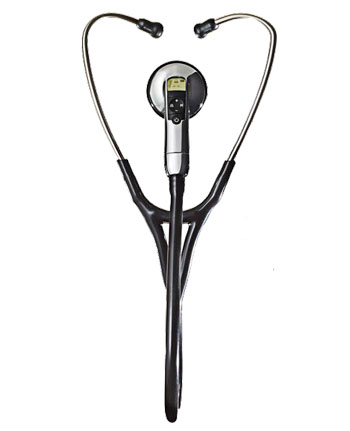Don’t forget to :
The stethoscope hasn’t undergone many significant breakthroughs until now. 3M’s new stethoscope listens to a patient’s heartbeat, captures the sound for later playback, lets you transmit sounds real-time to your PC, which can then be further analyzed, attached to medical records, or reviewed online with colleagues.

The stethoscope is older than the x-ray, the ballpoint pen, Popular Science and pretty much everything else in your doctor’s office. Now, 190 years after its invention, the go-to diagnostic tool hanging around every doc’s neck has earned a modern makeover. The sound-amplifying 3M Littmann Electronic Stethoscope 3200 listens to a patient’s heartbeat—lub-DUB, lub-DUB—and beams the beats to Cardioscan software that detects abnormalities.
Even top physicians have trouble discerning the swishing sounds that result from irregular surges of blood after the lub from the ones that follow the DUB. Called murmurs, the former are harmless, but the latter can indicate ailments such as congenital heart defects, holes in the heart wall, and constricted or leaky heart valves that interrupt blood flow. If the heartbeat sounds remotely atypical, many doctors prescribe a conclusive, and expensive, echocardiogram test.
3M’s stethoscope eliminates that guesswork. It transmits heart sounds to a doctor’s PC by Bluetooth, and Cardioscan renders a near real-time graphical representation of the sounds onscreen. The software then analyzes the sound waves and highlights minute abnormalities that signal harmful murmurs. The doctor can play the sound back at half speed to diagnose a problem more confidently, save the file to the patient’s chart, and e-mail it all to a cardiologist to confirm the diagnosis. Early tests of the system suggest that it could eliminate more than eight million unnecessary echocardiograms and cardiologist visits a year, saving some $9.4 billion and, even better, catch more of the dangerous murmurs. For doctors, and anyone with a heart, this stethoscope’s upgrades are well worth the two-century-long wait.
0 comments:
Post a Comment